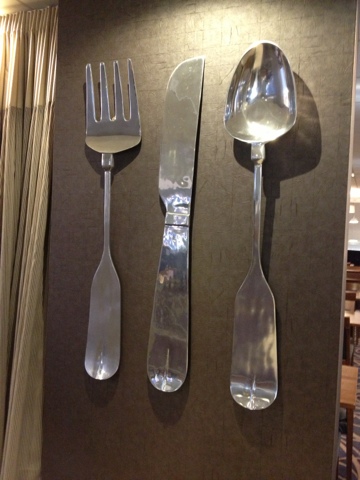The FSCI (Foodservice Consultants Institute) held their international conference last week where the debate turned to food and business trends that might be on the hospitality landscape in 2020. Insects on the menu, South East Asian food, aging diners and nutritional guidelines were the some of the main headlines in the discussion.
Insects I'm not too sure about, but the other three are definitely due for a big appearance on the horizon in my humble opinion.
But first, let's think about the concept of 2020 for a second. It sounds so futuristic in the 'science fiction' sense of the word. Even now I still picture Stanley Kubrick's "2001: A space odyssey" as taking place during some distant time way off in the future when those fleeting twelve months have already well and truly left the building. And sadly, with no monolith to show for it. (Imagine that as a Y2K 'project of the people' rather than New Labour's recipe for blancmange, the Millennium Dome). But alas 2020 is only seven years away. Or six actually, with only weeks 'til the next New Year hangover.
So to get a concept of what trends might look like over such a timespan, let's take a look back at the last seven years. For me personally, the UK had a fresh appeal having just arrived back after an eight year spell in Kathmandu during which time I looked around at what might become the 'next big thing'.
Boutique hotels immediately spring to mind with suede throws in rooms of Farrow and Ball autumnal shades. Gastro-pubs too were attracting Celebrity chefs away from expensive starched tableware and into low maintenance wood floors. The PubCos rubbed their hands with glee as articles in the Caterer & Hotelkeeper encouraged chefs that this was their easiest route to running their own business. It was. But it was also a honey trap. Within a matter of months, Gordon Ramsay Holdings snapped up The Narrow for £4M quid, quickly following with The Devonshire and then The Warrington. Worral-Thompson (remember him?) took on The Greyhound while media-phwoar Jean Christophe Novelli took on Green King tenancies at the white Horse in Harpenden and The French Horn in Steppingly (a pun no doubt appealing to ladies of a certain age.)
During this time the buzzwords to catch the wave were 'casual dining'; 'grazing dishes'; 'tapas fusion' and 'Modern British'. And bars. Just insert a generic word in front of the word bar and voila! - a new concept is born: juice bars, coffee bars, seafood bars, dessert bars, noodle bars... you get the idea.
As for actual food trends, I'd say the rise and rise of coffee - yes it is food for the purpose of this topic - has been quite relentless. It has even been mooted as the saviour of the ailing pub. Nothing is.
The branding of sustainability has also increased, with logos such as Red Tractor, Freedom Assured and MSC making their way onto the menu for customers to feel more considerate in their choice of animal flavoured protein.
Artisan pizzas, dirty burgers, gourmet hot dogs and chipotle chilli burritos have all had their fifteen minutes of fame. And for that sweet tooth we have seen seasonal macaroons, salted caramel you-name-it, water-based ganache truffles, doughnuts, cronuts and now vintage-plated retro sponge cakes thanks to the meteoric rise of amateur baking as championed on Great British Bake Off.
Just like the proverbial soufflé however, what goes up must come down and as such, these too will come to pass.
Boutique hotels are being squeezed out by the budget brands of Premier Inn and Travelodge while the Gastro-pub business model lauded by the brightest and best turned into huge liabilities as a result of the recession with many of them having been sold on to naive new owners keen to make their mark. (To be fair, a few continue to beat the odds - Tom Kerridge championing honest-to-goodness British food at his two-star-Michelin Hand and Flowers is riding a crest just now. And deservedly so after years of hard work at the stove.)
Seven years from now in 2020, we WILL care more about the nutritional value of our dining-out choices. We WILL be keen to try new and authentic micro-regional dishes from Asian countries that we or our children are travelling to. We will even eat a few insects if the right celebrity chef or brand can get behind the initiative.
What WON'T happen however is the stagnation or grinding to a halt of these continual food trends and new business concepts. Certainly not as long as organisations like the FCSI, Academy of Catering Excellence, Institute of Hospitality, Arena, BHA and a host of other professional bodies continue to foster debate, research and discussion among their members to ensure the industry stays vibrant for decades to come.
As a veteran casino owner once said to me after 40 years in Nepal: "the only thing constant here, is change." I suspect the same applies to food trends and business concepts in the year 2020.
























